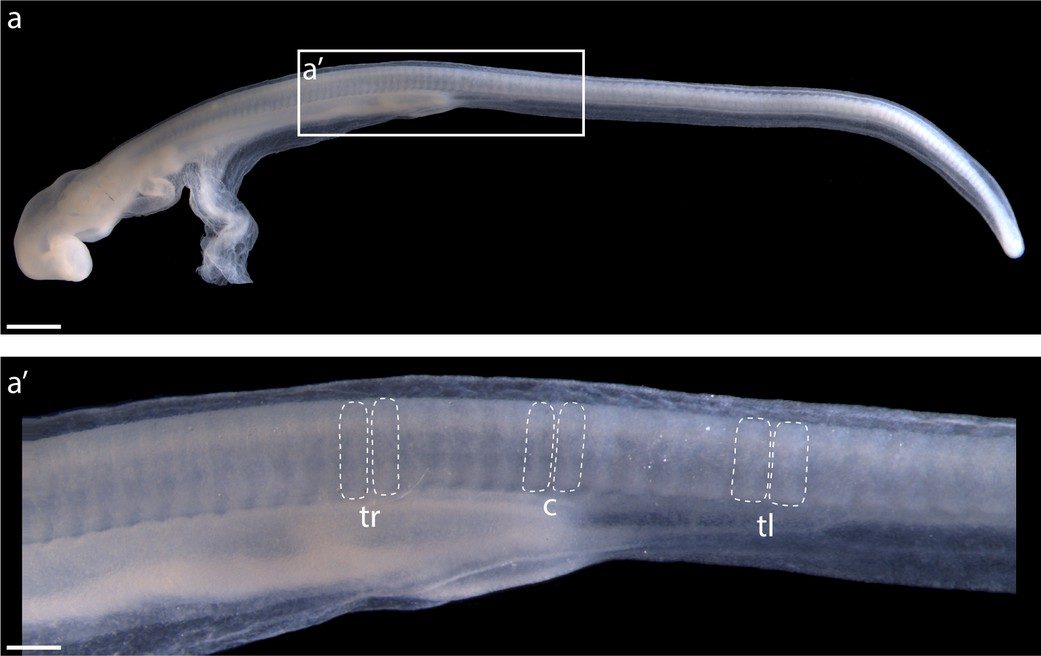Skate Skeletons and the Development of the Backbone

Whitman Center Scientists Katharine Criswell and Andrew Gillis of the University of Cambridge, U.K., co-authored a new paper in the Journal eLife.
Many people don’t realize that the major components of the backbone (for example, the centra, which make up the core of the backbone) have evolved independently many, many times within vertebrate animals. A previous study by first-author Katharine Criswell demonstrated that despite this independent evolution, the major components of the backbone arise largely from the same embryonic cell type across different jawed vertebrate lineages including cartilaginous fishes, like sharks and skates, and in mammals.
 Segmental organization of paraxial mesoderm and the vertebral skeleton in the skate. Credit: Criswell, Gillis 2020.
Segmental organization of paraxial mesoderm and the vertebral skeleton in the skate. Credit: Criswell, Gillis 2020.In this new study—Resegmentation is an ancestral feature of the gnathostome vertebral skeleton—the researchers investigated the way by which animals delineate the boundaries of individual vertebrae, and found that skates and tetrapods use a common mechanism to do this. They found that the backbones of skates and tetrapods are following a common and deeply conserved embryological ground plan.
"Which probably explains why these two skeletal features come out looking relatively similar to one another despite having evolved independently from one another hundreds of millions of years ago," says Gillis.
"A good analogy would be three builders setting out to construct a chair using the same plan and the same raw materials - though built independently, the common instruction and starting materials should result on three chairs that come out looking more or less the same," he says.
Citation: Criswell, K. E., & Gillis, J. A. (2020). Resegmentation is an ancestral feature of the gnathostome vertebral skeleton. Elife, 9. http://doi.org/10.7554/eLife.51696